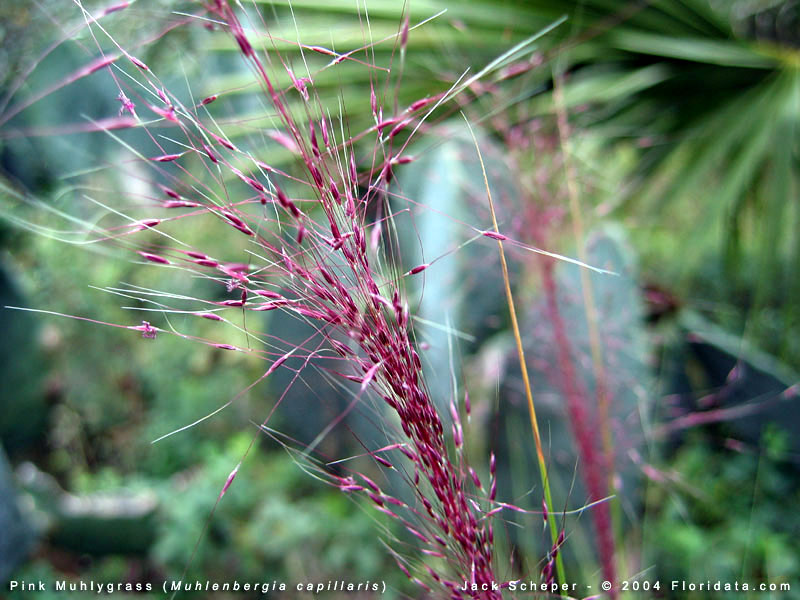Because of the short weeks we had due to rain and the Thanksgiving holiday, today we had our first new plant for plant identification training in 3 weeks! Last week, the crews reviewed the plants they learned in November: Carex 'Evergold', Chinese pistache, and tea olive.
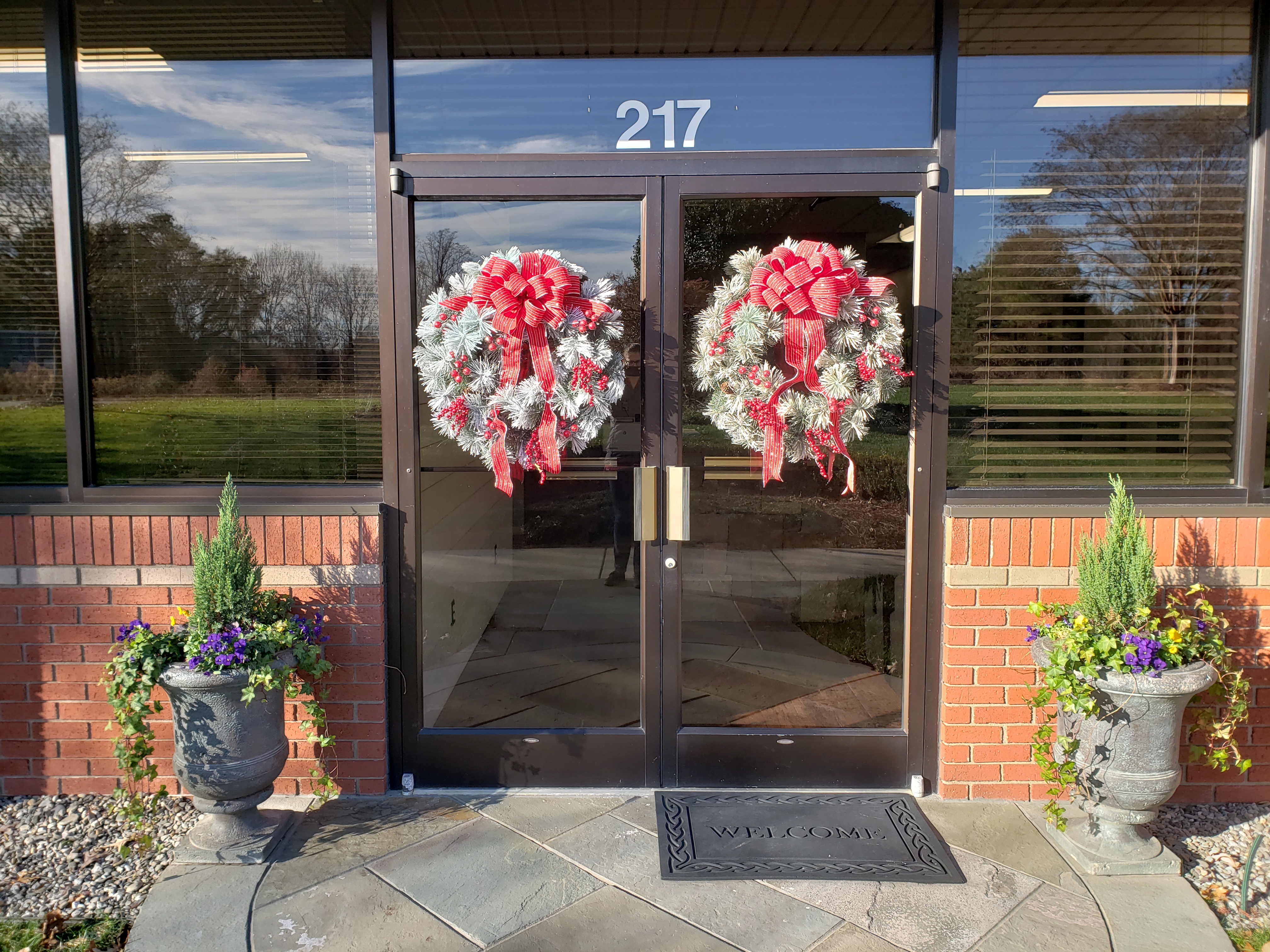 The Myatt Landscaping office is ready for the holidays!
The Myatt Landscaping office is ready for the holidays!
Pink muhly grass, or Muhlenbergia capillaris, is one of my top favorite plants. Best grouped in masses, this ornamental native grass blooms in fall creating the effect of fluffy, pink clouds. These grasses can add ethereal beauty to the home garden perennial border, or a stunning display of fall color in public parks and along highways in mass plantings. In late fall, the pink flowers develop into gray-purple seeds, which are eaten by birds and small mammals. The seedheads then fade to a light buff color, and retain their attractiveness until spring, adding texture and movement to the winter landscape. They thrive in full sun, and are tolerant of heat, humidity, drought, poor soil, and are also highly tolerant of salt and deer! These grasses do well in every part of NC as long as they are not planted in shady or wet areas.
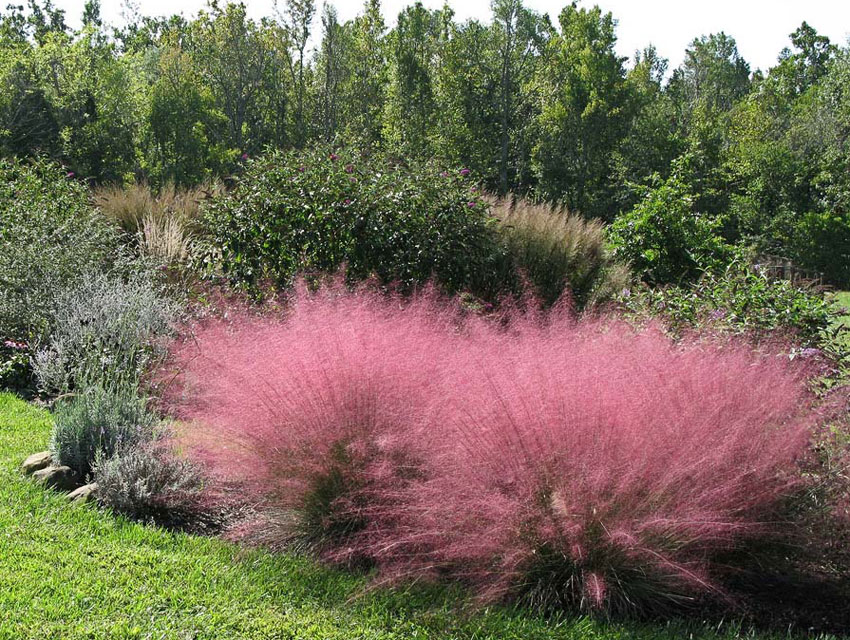 Muhlenbergia capillaris (Photo credit: Mark Turner)
Muhlenbergia capillaris (Photo credit: Mark Turner)
Although the most widely accepted common name is pink muhly grass, more recently it is being referred to as simply "muhly grass," because of a white-flowered variant developed in the early 2000's, Muhlenbergia capillaris 'White Cloud.' White Cloud muhly grass is a bit more upright than the species.
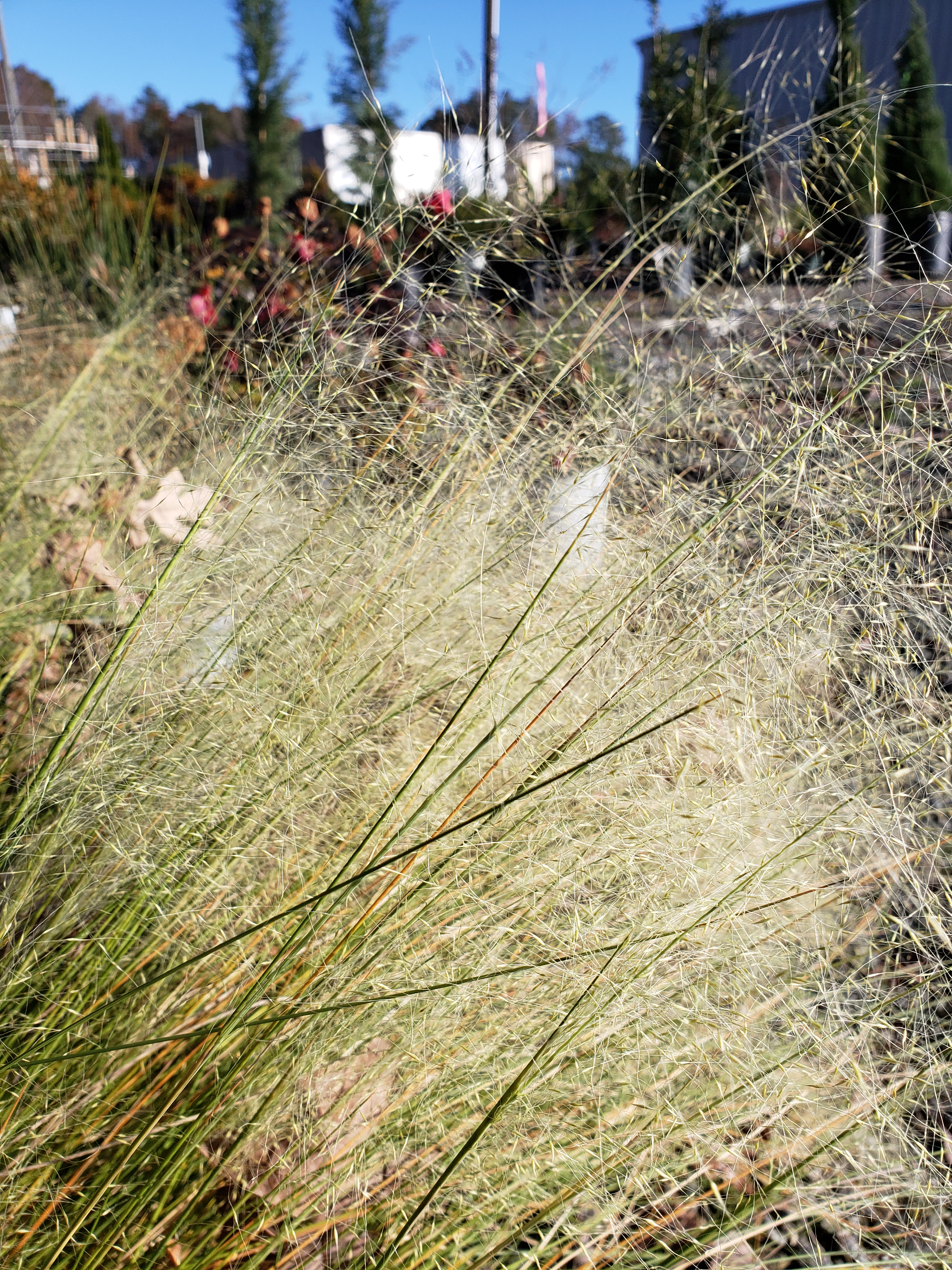 Muhlenbergia 'White Cloud' in the plant holding area at our office.
Muhlenbergia 'White Cloud' in the plant holding area at our office.
Maintenance Tips
Both pink and white muhly grass are very low maintenance. They typically do not need to be cut back the first year after they are planted, but may need to be cut back or thinned in early spring after they are well established. This will help ensure that they have enough air circulation, which will protect against disease.
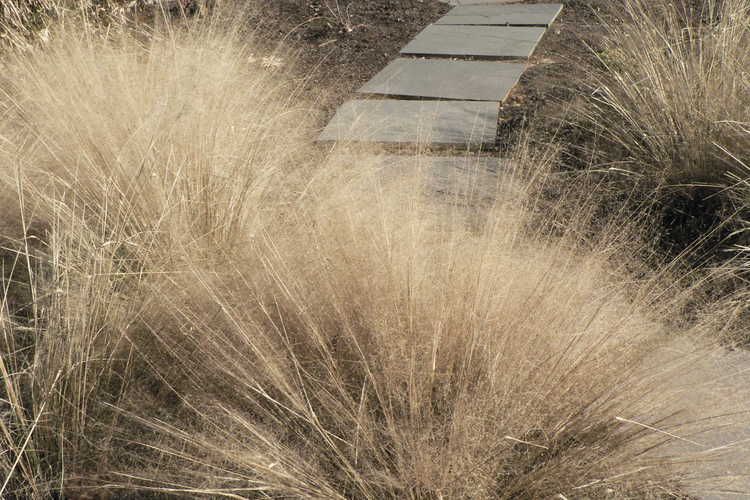 Muhly grass in winter (Photo credit: JC Raulston Arboretum)
Muhly grass in winter (Photo credit: JC Raulston Arboretum)
ID Tips
- The leaves are dark green, thin, and wiry, and grow in a neat, rounded clump. There aren't many other grasses that look similar. There are many species of Muhlenbergia, but M. capillaris is the most commonly available one.
- The blooms are unmistakable--panicles (clusters) of pink to deep rose hair-like filaments.
